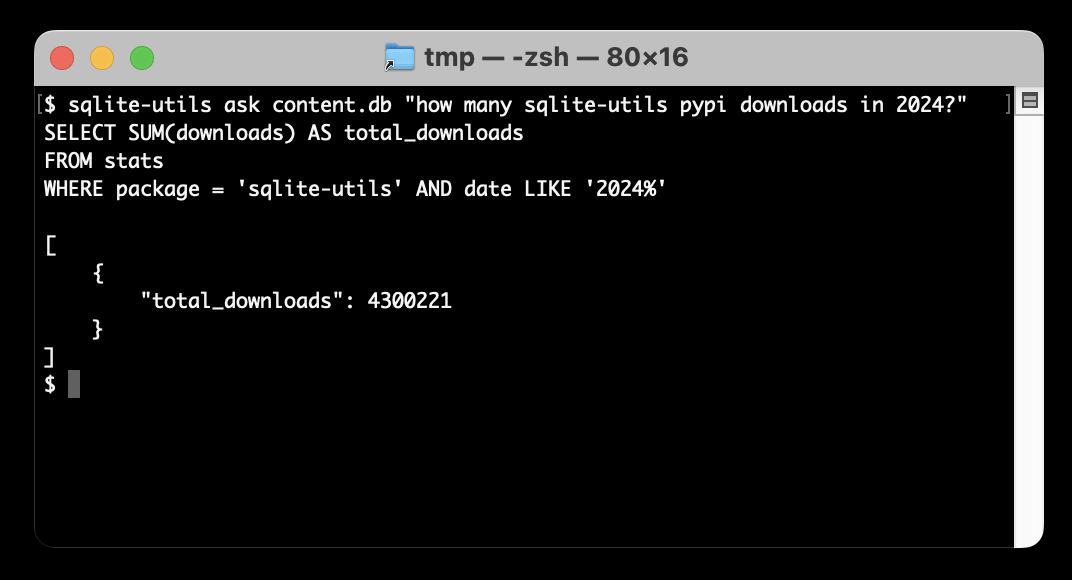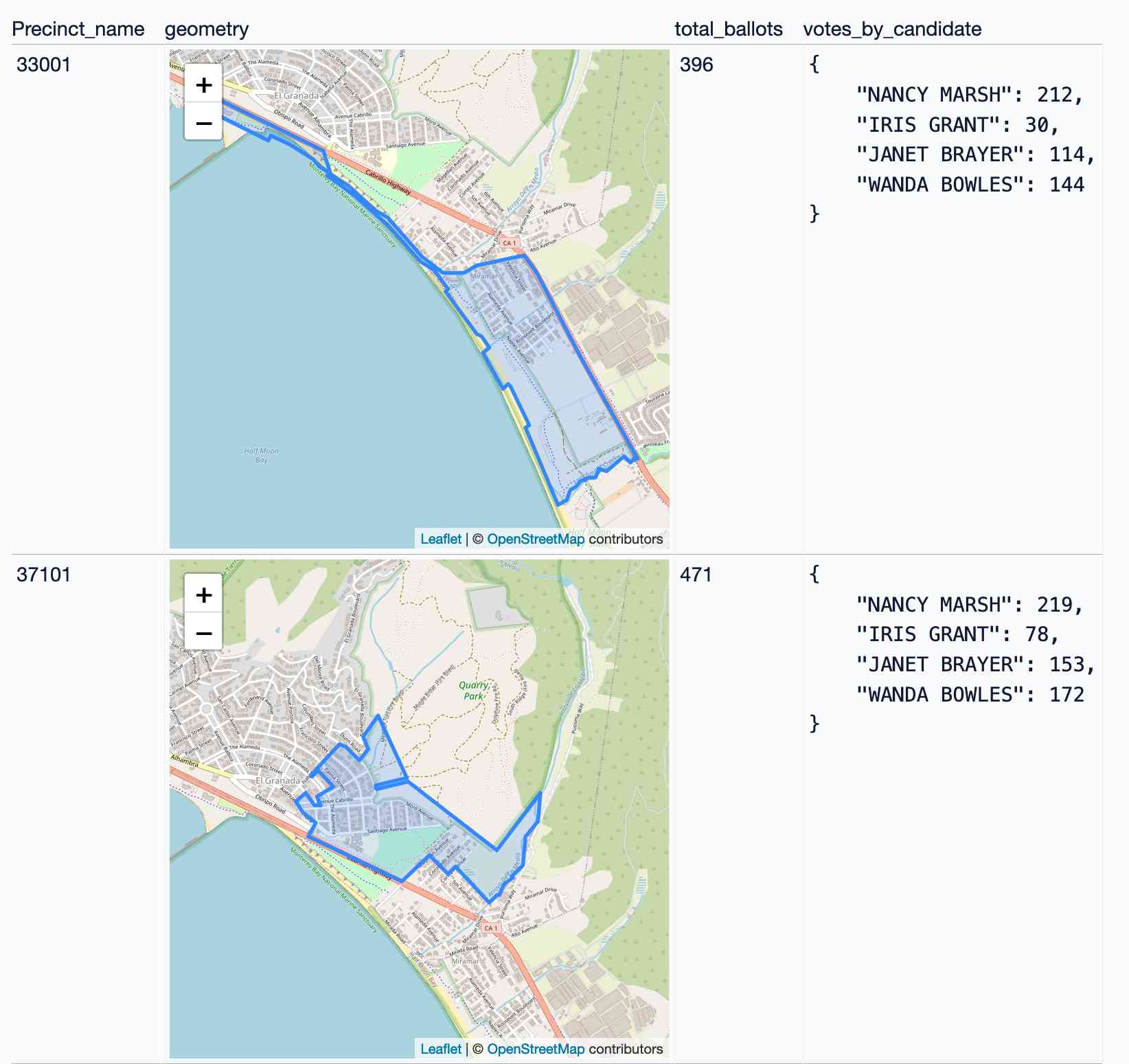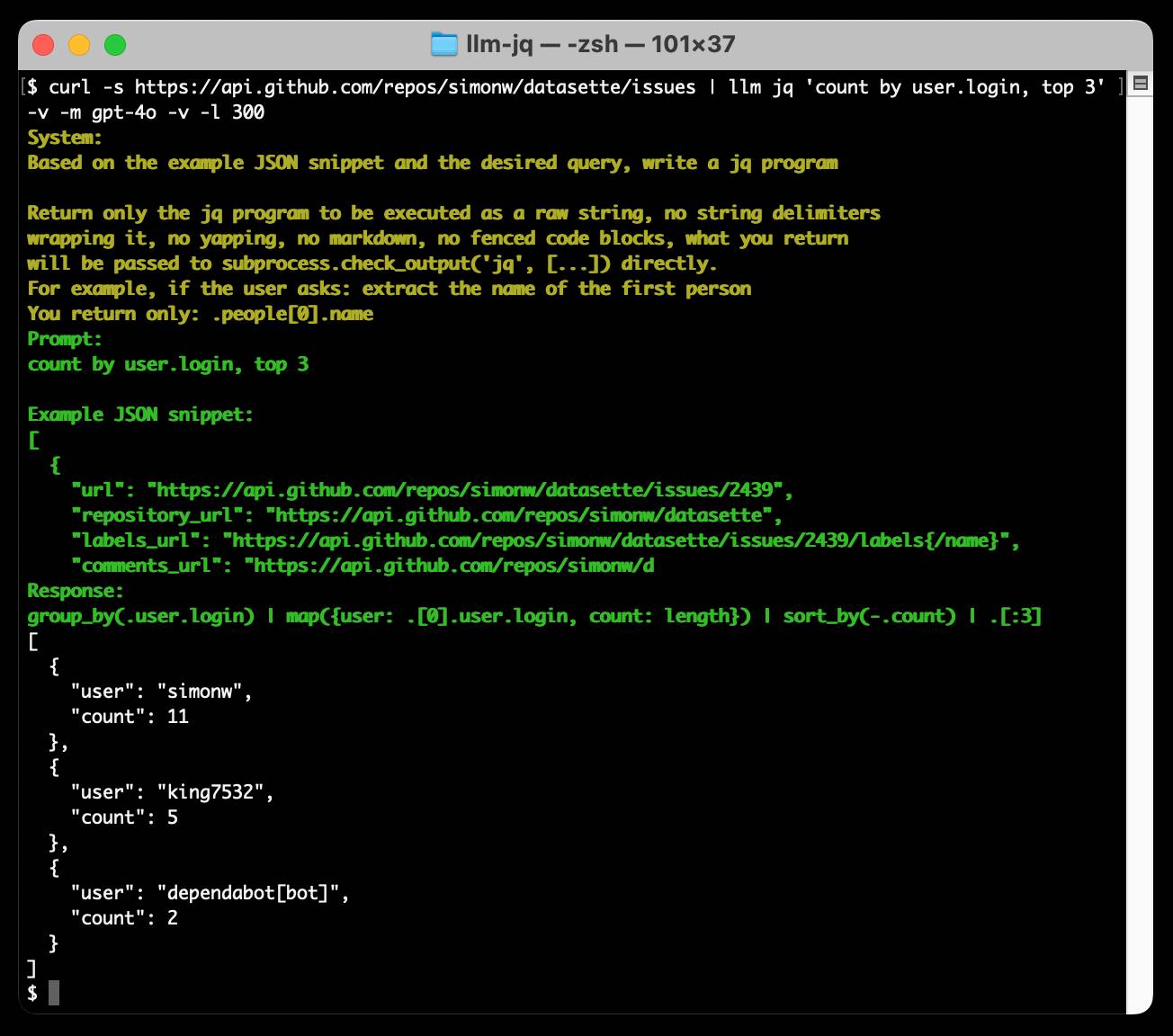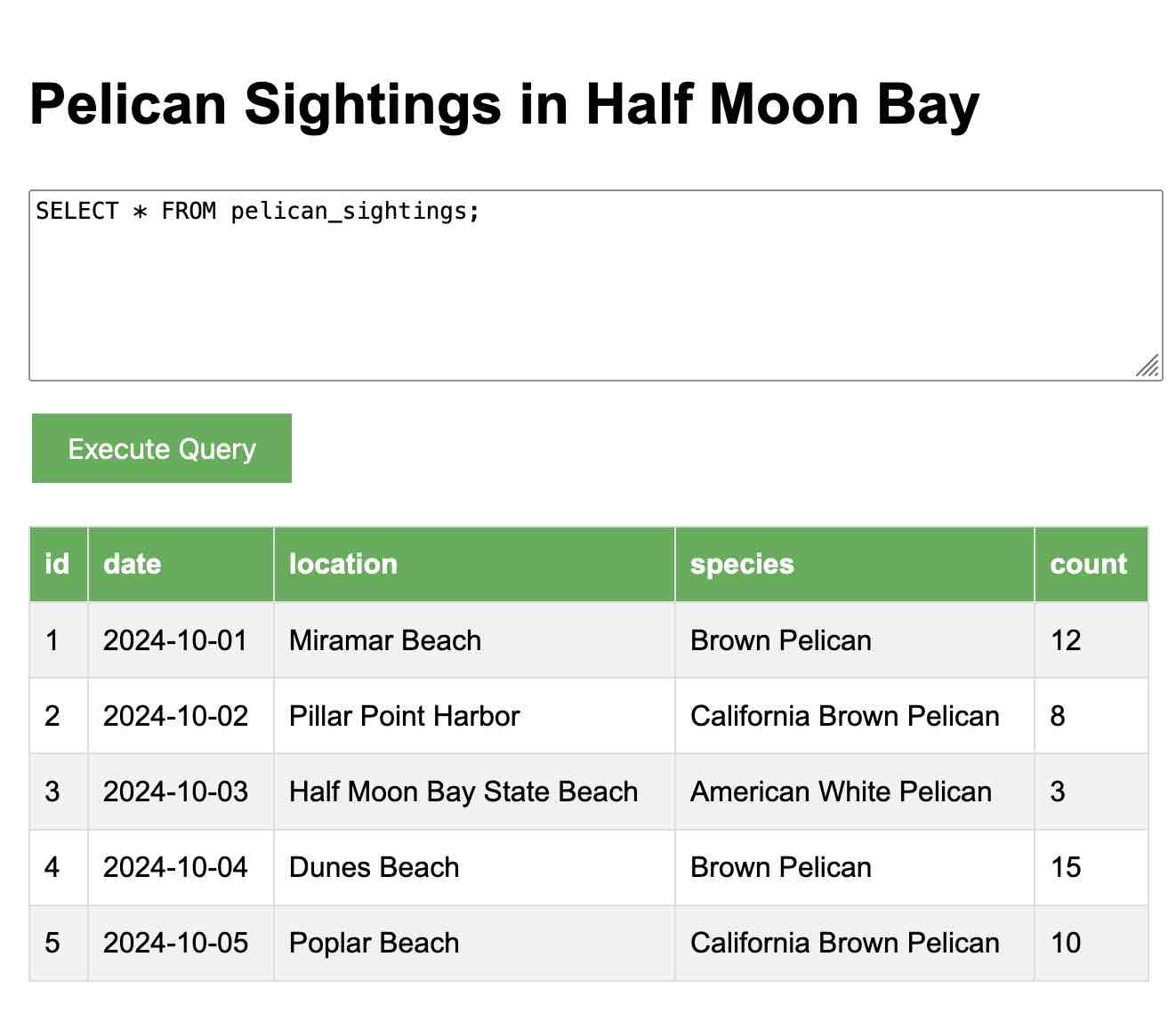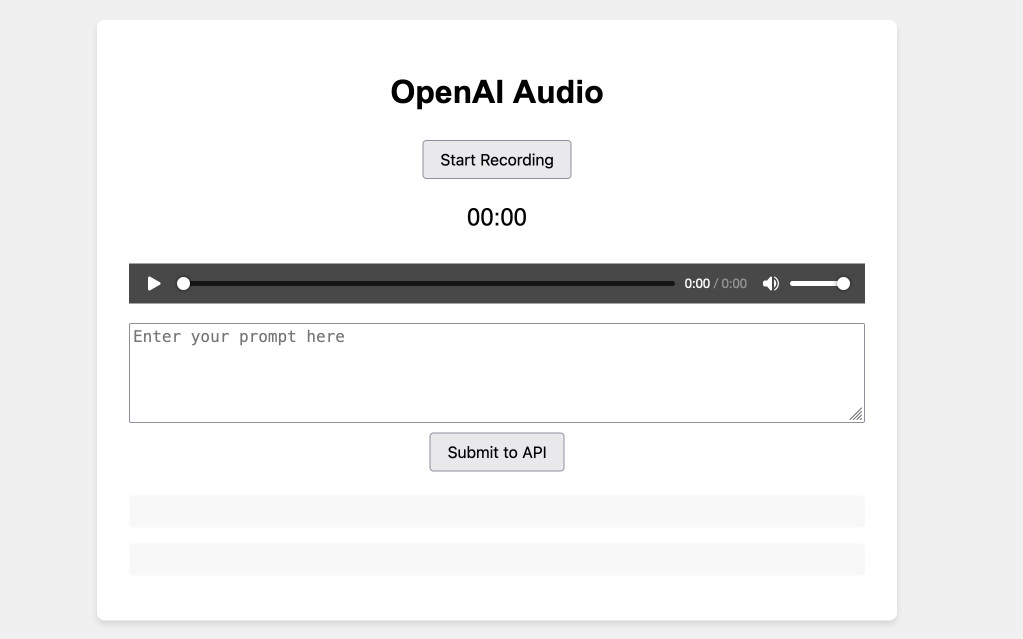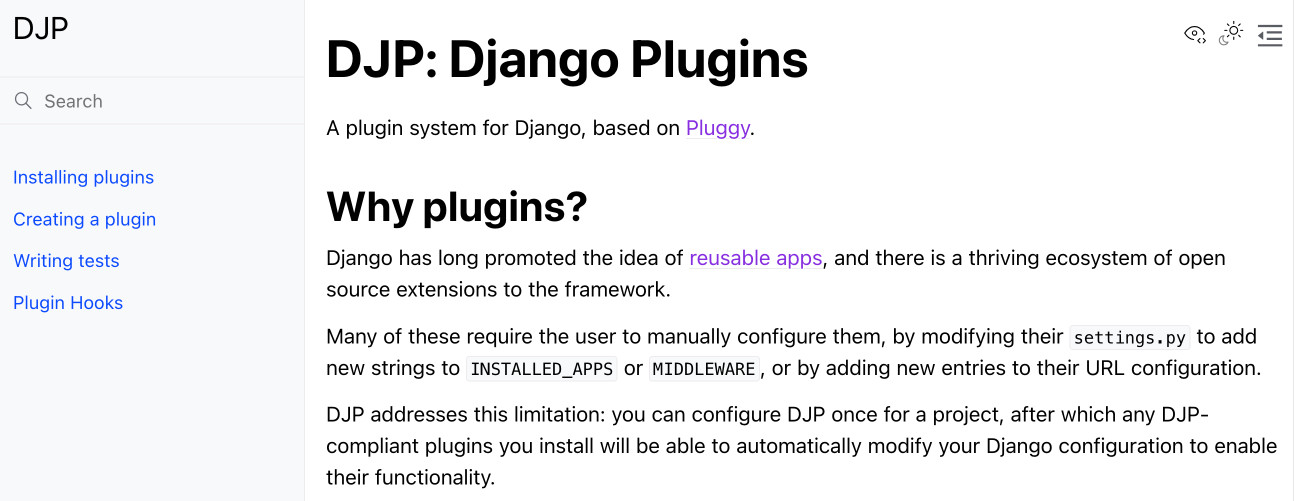511 posts tagged “projects”
Posts about projects I have worked on.
2024
datasette-queries. I released the first alpha of a new plugin to replace the crusty old datasette-saved-queries. This one adds a new UI element to the top of the query results page with an expandable form for saving the query as a new canned query:
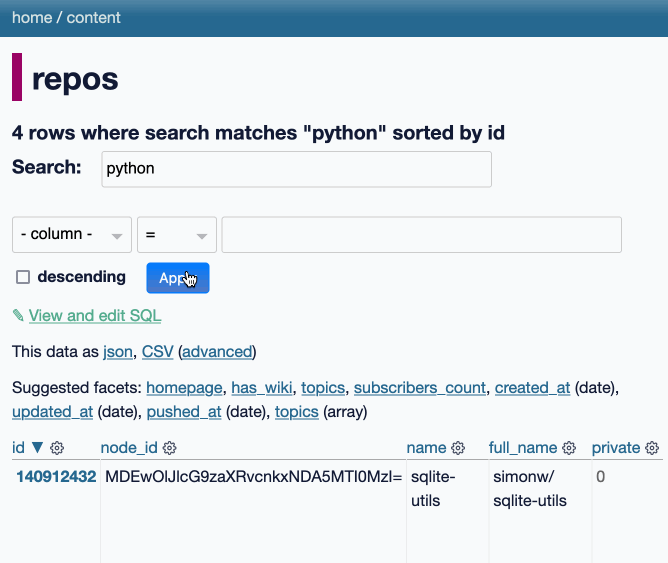
It's my first plugin to depend on LLM and datasette-llm-usage - it uses GPT-4o mini to power an optional "Suggest title and description" button, labeled with the becoming-standard ✨ sparkles emoji to indicate an LLM-powered feature.
I intend to expand this to work across multiple models as I continue to iterate on llm-datasette-usage to better support those kinds of patterns.
For the moment though each suggested title and description call costs about 250 input tokens and 50 output tokens, which against GPT-4o mini adds up to 0.0067 cents.
datasette-llm-usage. I released the first alpha of a Datasette plugin to help track LLM usage by other plugins, with the goal of supporting token allowances - both for things like free public apps that stop working after a daily allowance, plus free previews of AI features for paid-account-based projects such as Datasette Cloud.
It's using the usage features I added in LLM 0.19.
The alpha doesn't do much yet - it will start getting interesting once I upgrade other plugins to depend on it.
Design notes so far in issue #1.
LLM 0.19. I just released version 0.19 of LLM, my Python library and CLI utility for working with Large Language Models.
I released 0.18 a couple of weeks ago adding support for calling models from Python asyncio code. 0.19 improves on that, and also adds a new mechanism for models to report their token usage.
LLM can log those usage numbers to a SQLite database, or make then available to custom Python code.
My eventual goal with these features is to implement token accounting as a Datasette plugin so I can offer AI features in my SaaS platform without worrying about customers spending unlimited LLM tokens.
Those 0.19 release notes in full:
- Tokens used by a response are now logged to new
input_tokensandoutput_tokensinteger columns and atoken_detailsJSON string column, for the default OpenAI models and models from other plugins that implement this feature. #610llm promptnow takes a-u/--usageflag to display token usage at the end of the response.llm logs -u/--usageshows token usage information for logged responses.llm prompt ... --asyncresponses are now logged to the database. #641llm.get_models()andllm.get_async_models()functions, documented here. #640response.usage()and async responseawait response.usage()methods, returning aUsage(input=2, output=1, details=None)dataclass. #644response.on_done(callback)andawait response.on_done(callback)methods for specifying a callback to be executed when a response has completed, documented here. #653- Fix for bug running
llm chaton Windows 11. Thanks, Sukhbinder Singh. #495
I also released three new plugin versions that add support for the new usage tracking feature: llm-gemini 0.5, llm-claude-3 0.10 and llm-mistral 0.9.
GitHub OAuth for a static site using Cloudflare Workers. Here's a TIL covering a Thanksgiving AI-assisted programming project. I wanted to add OAuth against GitHub to some of the projects on my tools.simonwillison.net site in order to implement "Save to Gist".
That site is entirely statically hosted by GitHub Pages, but OAuth has a required server-side component: there's a client_secret involved that should never be included in client-side code.
Since I serve the site from behind Cloudflare I realized that a minimal Cloudflare Workers script may be enough to plug the gap. I got Claude on my phone to build me a prototype and then pasted that (still on my phone) into a new Cloudflare Worker and it worked!
... almost. On later closer inspection of the code it was missing error handling... and then someone pointed out it was vulnerable to a login CSRF attack thanks to failure to check the state= parameter. I worked with Claude to fix those too.
Useful reminder here that pasting code AI-generated code around on a mobile phone isn't necessarily the best environment to encourage a thorough code review!
Ask questions of SQLite databases and CSV/JSON files in your terminal
I built a new plugin for my sqlite-utils CLI tool that lets you ask human-language questions directly of SQLite databases and CSV/JSON files on your computer.
[... 723 words]Weeknotes: asynchronous LLMs, synchronous embeddings, and I kind of started a podcast
These past few weeks I’ve been bringing Datasette and LLM together and distracting myself with a new sort-of-podcast crossed with a live streaming experiment.
[... 896 words]llm-gguf 0.2, now with embeddings. This new release of my llm-gguf plugin - which provides support for locally hosted GGUF LLMs - adds a new feature: it now supports embedding models distributed as GGUFs as well.
This means you can use models like the bafflingly small (30.8MB in its smallest quantization) mxbai-embed-xsmall-v1 with LLM like this:
llm install llm-gguf
llm gguf download-embed-model \
'https://huggingface.co/mixedbread-ai/mxbai-embed-xsmall-v1/resolve/main/gguf/mxbai-embed-xsmall-v1-q8_0.gguf'
Then to embed a string:
llm embed -m gguf/mxbai-embed-xsmall-v1-q8_0 -c 'hello'
The LLM docs have extensive coverage of things you can then do with this model, like embedding every row in a CSV file / file in a directory / record in a SQLite database table and running similarity and semantic search against them.
Under the hood this takes advantage of the create_embedding() method provided by the llama-cpp-python wrapper around llama.cpp.
llm-gemini 0.4.
New release of my llm-gemini plugin, adding support for asynchronous models (see LLM 0.18), plus the new gemini-exp-1114 model (currently at the top of the Chatbot Arena) and a -o json_object 1 option to force JSON output.
I also released llm-claude-3 0.9 which adds asynchronous support for the Claude family of models.
LLM 0.18. New release of LLM. The big new feature is asynchronous model support - you can now use supported models in async Python code like this:
import llm
model = llm.get_async_model("gpt-4o")
async for chunk in model.prompt(
"Five surprising names for a pet pelican"
):
print(chunk, end="", flush=True)
Also new in this release: support for sending audio attachments to OpenAI's gpt-4o-audio-preview model.
QuickTime video script to capture frames and bounding boxes. An update to an older TIL. I'm working on the write-up for my DjangoCon US talk on plugins and I found myself wanting to capture individual frames from the video in two formats: a full frame capture, and another that captured just the portion of the screen shared from my laptop.
I have a script for the former, so I got Claude to update my script to add support for one or more --box options, like this:
capture-bbox.sh ../output.mp4 --box '31,17,100,87' --box '0,0,50,50'
Open output.mp4 in QuickTime Player, run that script and then every time you hit a key in the terminal app it will capture three JPEGs from the current position in QuickTime Player - one for the whole screen and one each for the specified bounding box regions.
Those bounding box regions are percentages of the width and height of the image. I also got Claude to build me this interactive tool on top of cropperjs to help figure out those boxes:
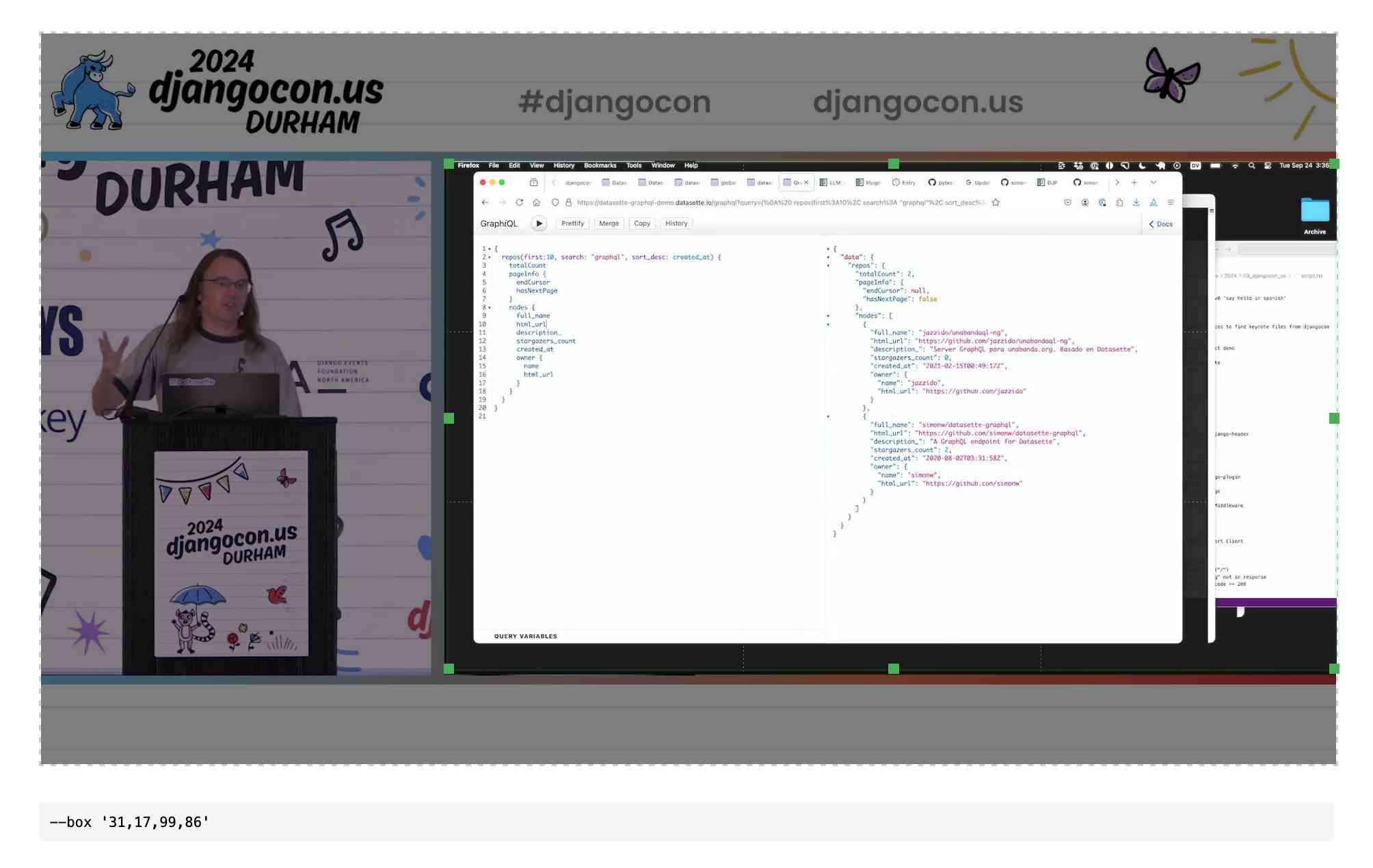
MDN Browser Support Timelines. I complained on Hacker News today that I wished the MDN browser compatibility ables - like this one for the Web Locks API - included an indication as to when each browser was released rather than just the browser numbers.
It turns out they do! If you click on each browser version in turn you can see an expanded area showing the browser release date:
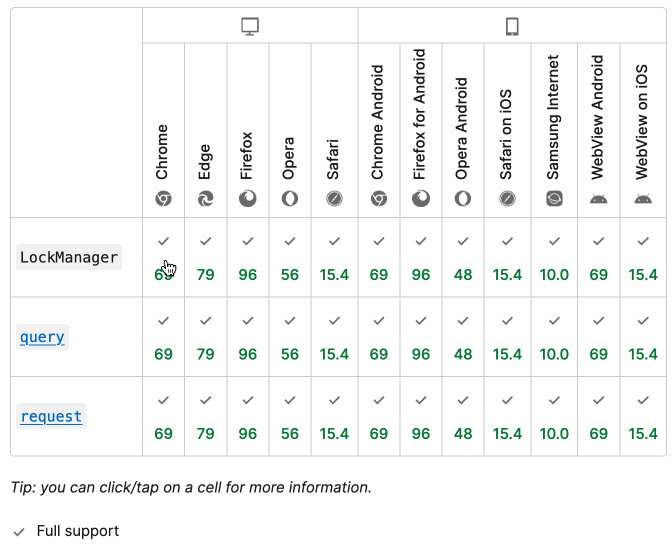
There's even an inline help tip telling you about the feature, which I've been studiously ignoring for years.
I want to see all the information at once without having to click through each browser. I had a poke around in the Firefox network tab and found https://bcd.developer.mozilla.org/bcd/api/v0/current/api.Lock.json - a JSON document containing browser support details (with release dates) for that API... and it was served using access-control-allow-origin: * which means I can hit it from my own little client-side applications.
I decided to build something with an autocomplete drop-down interface for selecting the API. That meant I'd need a list of all of the available APIs, and I used GitHub code search to find that in the mdn/browser-compat-data repository, in the api/ directory.
I needed the list of files in that directory for my autocomplete. Since there are just over 1,000 of those the regular GitHub contents API won't return them all, so I switched to the tree API instead.
Here's the finished tool - source code here:
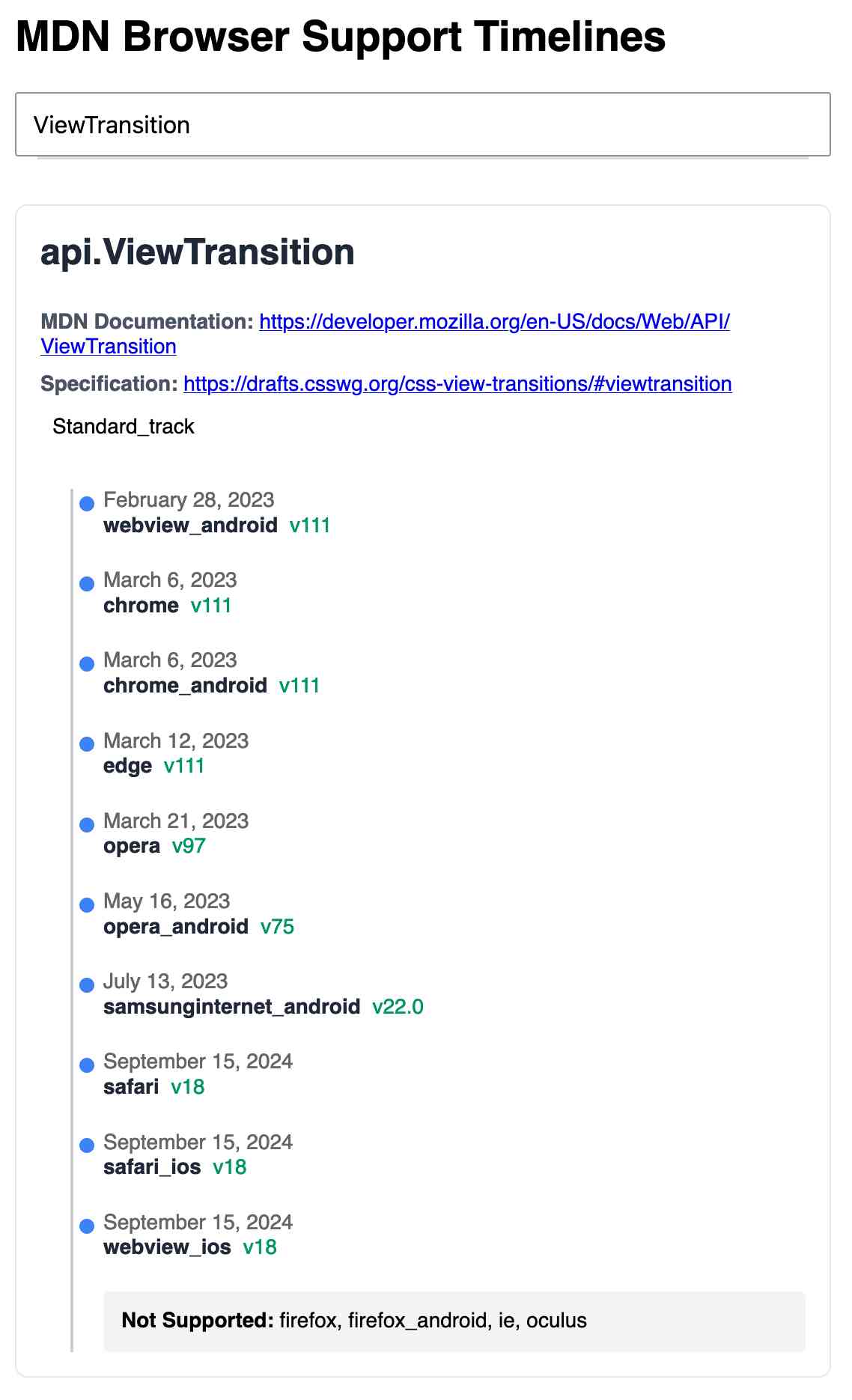
95% of the code was written by LLMs, but I did a whole lot of assembly and iterating to get it to the finished state. Three of the transcripts for that:
- Web Locks API Browser Support Timeline in which I paste in the original API JSON and ask it to come up with a timeline visualization for it.
- Enhancing API Feature Display with URL Hash where I dumped in a more complex JSON example to get it to show multiple APIs on the same page, and also had it add
#fragmentbookmarking to the tool - Fetch GitHub API Data Hierarchy where I got it to write me an async JavaScript function for fetching a directory listing from that tree API.
Visualizing local election results with Datasette, Observable and MapLibre GL
Alex Garcia and myself hosted the first Datasette Open Office Hours on Friday—a live-streamed video session where we hacked on a project together and took questions and tips from community members on Discord.
[... 3,390 words]Nous Hermes 3. The Nous Hermes family of fine-tuned models have a solid reputation. Their most recent release came out in August, based on Meta's Llama 3.1:
Our training data aggressively encourages the model to follow the system and instruction prompts exactly and in an adaptive manner. Hermes 3 was created by fine-tuning Llama 3.1 8B, 70B and 405B, and training on a dataset of primarily synthetically generated responses. The model boasts comparable and superior performance to Llama 3.1 while unlocking deeper capabilities in reasoning and creativity.
The model weights are on Hugging Face, including GGUF versions of the 70B and 8B models. Here's how to try the 8B model (a 4.58GB download) using the llm-gguf plugin:
llm install llm-gguf
llm gguf download-model 'https://huggingface.co/NousResearch/Hermes-3-Llama-3.1-8B-GGUF/resolve/main/Hermes-3-Llama-3.1-8B.Q4_K_M.gguf' -a Hermes-3-Llama-3.1-8B
llm -m Hermes-3-Llama-3.1-8B 'hello in spanish'
Nous Research partnered with Lambda Labs to provide inference APIs. It turns out Lambda host quite a few models now, currently providing free inference to users with an API key.
I just released the first alpha of a llm-lambda-labs plugin. You can use that to try the larger 405b model (very hard to run on a consumer device) like this:
llm install llm-lambda-labs
llm keys set lambdalabs
# Paste key here
llm -m lambdalabs/hermes3-405b 'short poem about a pelican with a twist'
Here's the source code for the new plugin, which I based on llm-mistral. The plugin uses httpx-sse to consume the stream of tokens from the API.
California Clock Change. The clocks go back in California tonight and I finally built my dream application for helping me remember if I get an hour extra of sleep or not, using a Claude Artifact. Here's the transcript.
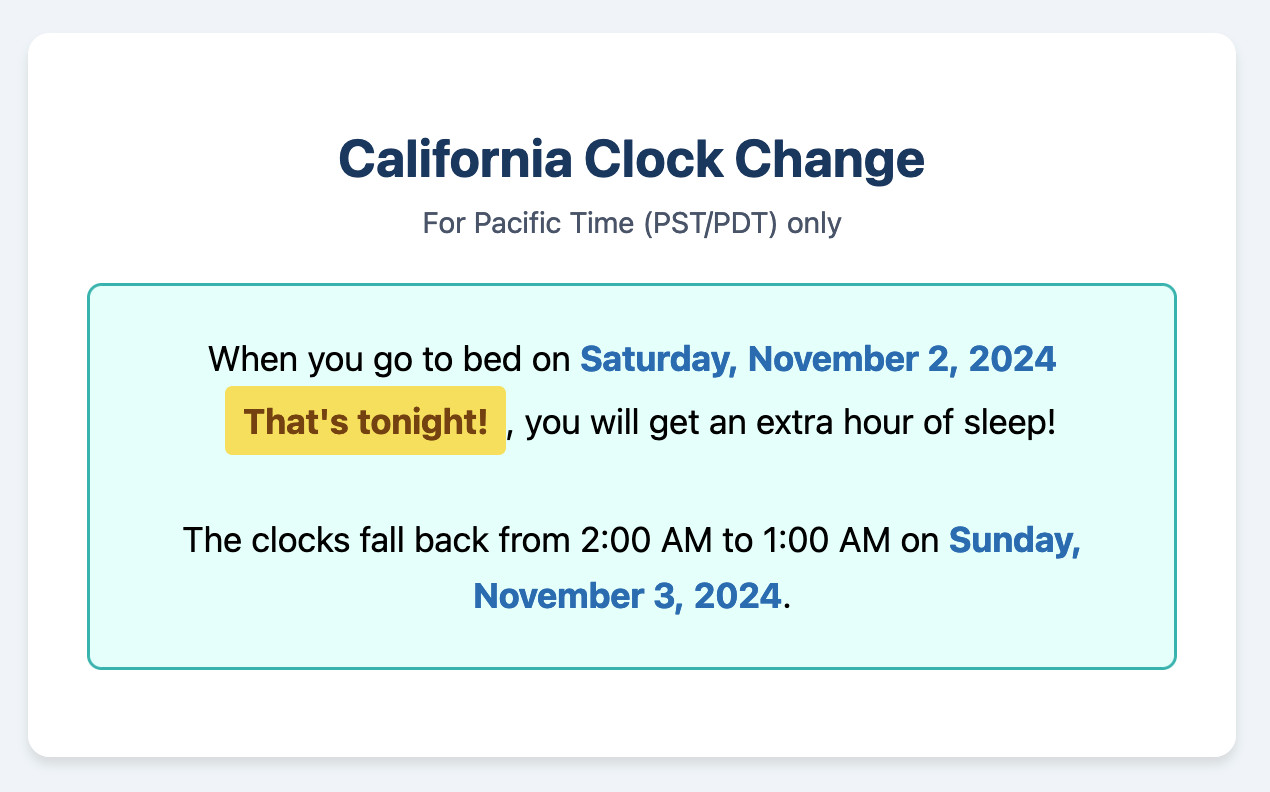
This is one of my favorite examples yet of the kind of tiny low stakes utilities I'm building with Claude Artifacts because the friction involved in churning out a working application has dropped almost to zero.
(I added another feature: it now includes a note of what time my Dog thinks it is if the clocks have recently changed.)
Claude API: PDF support (beta) (via) Claude 3.5 Sonnet now accepts PDFs as attachments:
The new Claude 3.5 Sonnet (
claude-3-5-sonnet-20241022) model now supports PDF input and understands both text and visual content within documents.
I just released llm-claude-3 0.7 with support for the new attachment type (attachments are a very new feature), so now you can do this:
llm install llm-claude-3 --upgrade
llm -m claude-3.5-sonnet 'extract text' -a mydoc.pdf
Visual PDF analysis can also be turned on for the Claude.ai application:
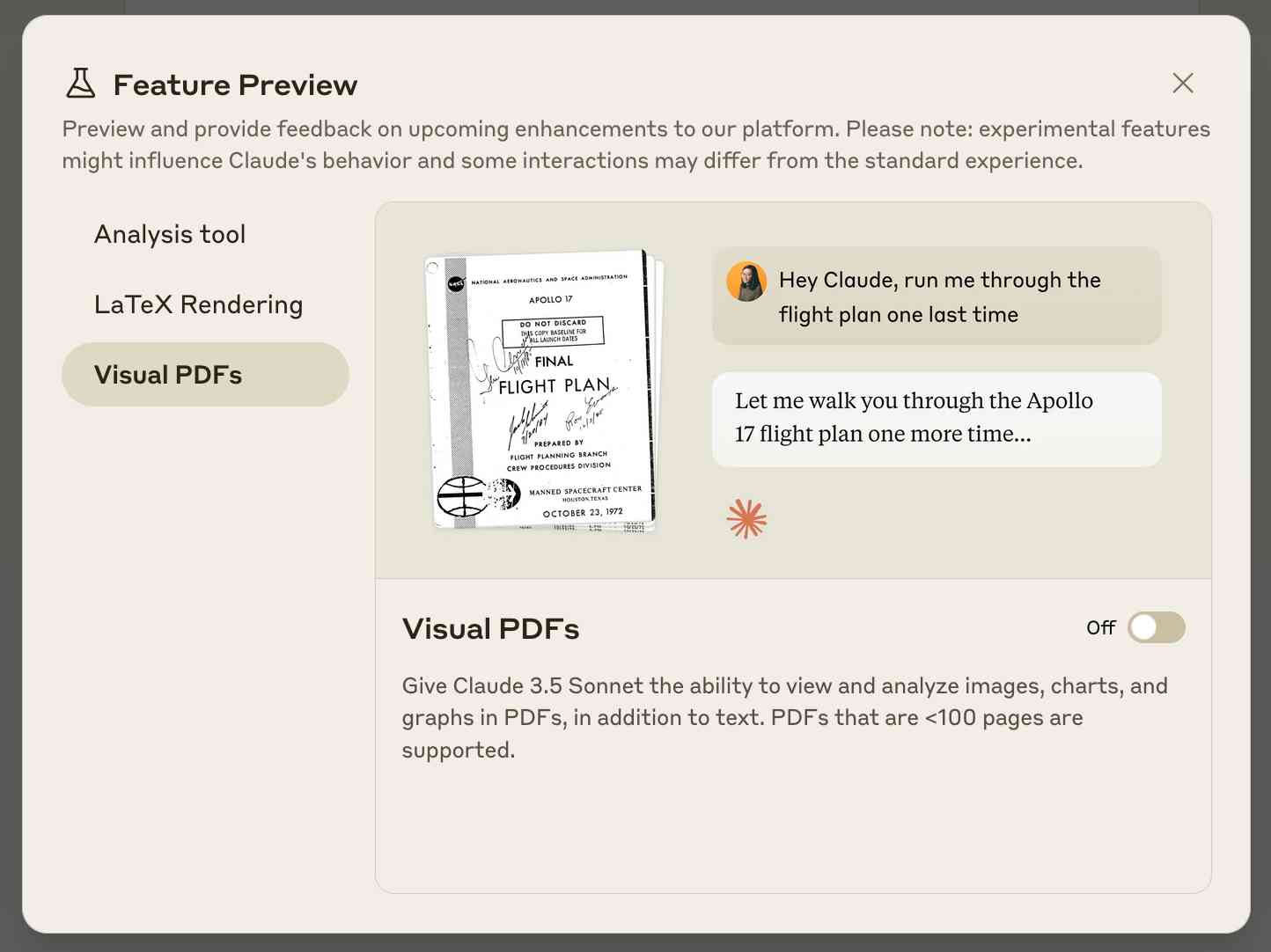
Also new today: Claude now offers a free (albeit rate-limited) token counting API. This addresses a complaint I've had for a while: previously it wasn't possible to accurately estimate the cost of a prompt before sending it to be executed.
You can now run prompts against images, audio and video in your terminal using LLM
I released LLM 0.17 last night, the latest version of my combined CLI tool and Python library for interacting with hundreds of different Large Language Models such as GPT-4o, Llama, Claude and Gemini.
[... 1,399 words]llm-whisper-api. I wanted to run an experiment through the OpenAI Whisper API this morning so I knocked up a very quick plugin for LLM that provides the following interface:
llm install llm-whisper-api
llm whisper-api myfile.mp3 > transcript.txt
It uses the API key that you previously configured using the llm keys set openai command. If you haven't configured one you can pass it as --key XXX instead.
It's a tiny plugin: the source code is here.
Run a prompt to generate and execute jq programs using llm-jq
llm-jq is a brand new plugin for LLM which lets you pipe JSON directly into the llm jq command along with a human-language description of how you’d like to manipulate that JSON and have a jq program generated and executed for you on the fly.
Running prompts against images and PDFs with Google Gemini.
New TIL. I've been experimenting with the Google Gemini APIs for running prompts against images and PDFs (in preparation for finally adding multi-modal support to LLM) - here are my notes on how to send images or PDF files to their API using curl and the base64 -i macOS command.
I figured out the curl incantation first and then got Claude to build me a Bash script that I can execute like this:
prompt-gemini 'extract text' example-handwriting.jpg
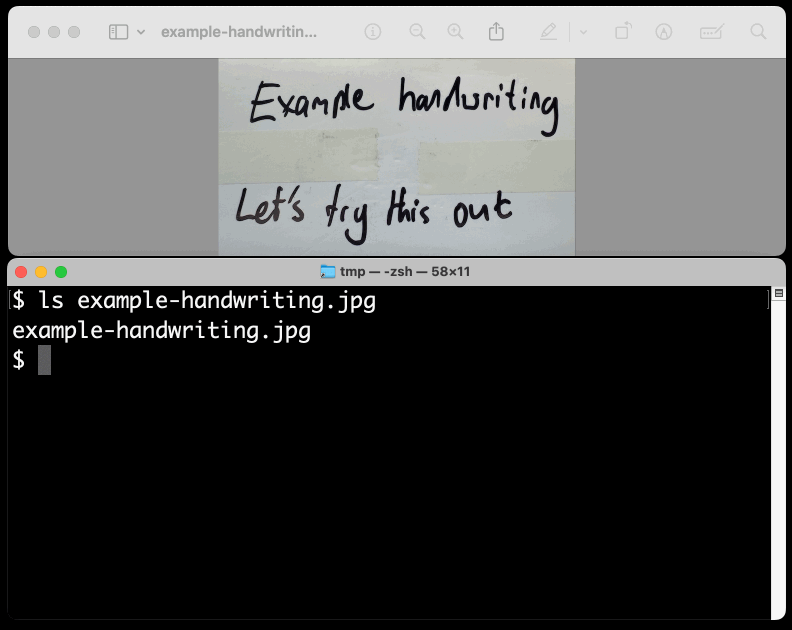
Playing with this is really fun. The Gemini models charge less than 1/10th of a cent per image, so it's really inexpensive to try them out.
Everything I built with Claude Artifacts this week
I’m a huge fan of Claude’s Artifacts feature, which lets you prompt Claude to create an interactive Single Page App (using HTML, CSS and JavaScript) and then view the result directly in the Claude interface, iterating on it further with the bot and then, if you like, copying out the resulting code.
[... 2,273 words]Dashboard: Tools. I used Django SQL Dashboard to spin up a dashboard that shows all of the URLs to my tools.simonwillison.net site that I've shared on my blog so far. It uses this (Claude assisted) regular expression in a PostgreSQL SQL query:
select distinct on (tool_url)
unnest(regexp_matches(
body,
'(https://tools\.simonwillison\.net/[^<"\s)]+)',
'g'
)) as tool_url,
'https://simonwillison.net/' || left(type, 1) || '/' || id as blog_url,
title,
date(created) as created
from contentI've been really enjoying having a static hosting platform (it's GitHub Pages serving my simonw/tools repo) that I can use to quickly deploy little HTML+JavaScript interactive tools and demos.
Experimenting with audio input and output for the OpenAI Chat Completion API
OpenAI promised this at DevDay a few weeks ago and now it’s here: their Chat Completion API can now accept audio as input and return it as output. OpenAI still recommend their WebSocket-based Realtime API for audio tasks, but the Chat Completion API is a whole lot easier to write code against.
[... 1,555 words]files-to-prompt 0.4. New release of my files-to-prompt tool adding an option for filtering just for files with a specific extension.
The following command will output Claude XML-style markup for all Python and Markdown files in the current directory, and copy that to the macOS clipboard ready to be pasted into an LLM:
files-to-prompt . -e py -e md -c | pbcopy
My Jina Reader tool. I wanted to feed the Cloudflare Durable Objects SQLite documentation into Claude, but I was on my iPhone so copying and pasting was inconvenient. Jina offer a Reader API which can turn any URL into LLM-friendly Markdown and it turns out it supports CORS, so I got Claude to build me this tool (second iteration, third iteration, final source code).
Paste in a URL to get the Jina Markdown version, along with an all important "Copy to clipboard" button.
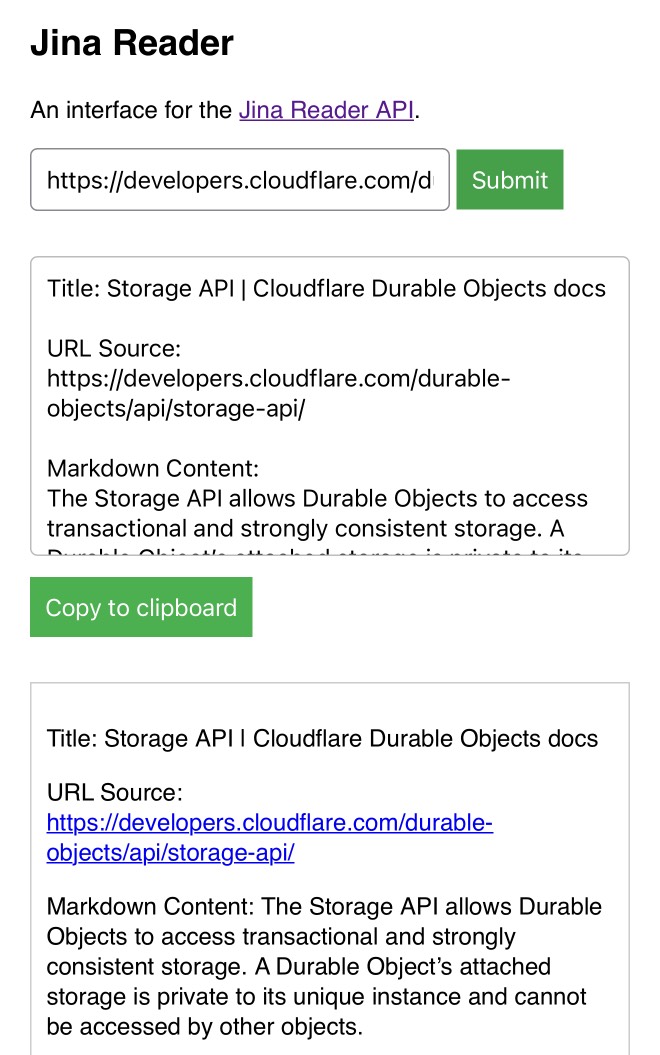
Datasette 0.65. Python 3.13 was released today, which broke compatibility with the Datasette 0.x series due to an issue with an underlying dependency. I've fixed that problem by vendoring and fixing the dependency and the new 0.65 release works on Python 3.13 (but drops support for Python 3.8, which is EOL this month). Datasette 1.0a16 added support for Python 3.13 last month.
django-plugin-datasette. I did some more work on my DJP plugin mechanism for Django at the DjangoCon US sprints today. I added a new plugin hook, asgi_wrapper(), released in DJP 0.3 and inspired by the similar hook in Datasette.
The hook only works for Django apps that are served using ASGI. It allows plugins to add their own wrapping ASGI middleware around the Django app itself, which means they can do things like attach entirely separate ASGI-compatible applications outside of the regular Django request/response cycle.
Datasette is one of those ASGI-compatible applications!
django-plugin-datasette uses that new hook to configure a new URL, /-/datasette/, which serves a full Datasette instance that scans through Django’s settings.DATABASES dictionary and serves an explore interface on top of any SQLite databases it finds there.
It doesn’t support authentication yet, so this will expose your entire database contents - probably best used as a local debugging tool only.
I did borrow some code from the datasette-mask-columns plugin to ensure that the password column in the auth_user column is reliably redacted. That column contains a heavily salted hashed password so exposing it isn’t necessarily a disaster, but I like to default to keeping hashes safe.
DJP: A plugin system for Django
DJP is a new plugin mechanism for Django, built on top of Pluggy. I announced the first version of DJP during my talk yesterday at DjangoCon US 2024, How to design and implement extensible software with plugins. I’ll post a full write-up of that talk once the video becomes available—this post describes DJP and how to use what I’ve built so far.
[... 1,664 words]simonw/docs cookiecutter template. Over the last few years I’ve settled on the combination of Sphinx, the Furo theme and the myst-parser extension (enabling Markdown in place of reStructuredText) as my documentation toolkit of choice, maintained in GitHub and hosted using ReadTheDocs.
My LLM and shot-scraper projects are two examples of that stack in action.
Today I wanted to spin up a new documentation site so I finally took the time to construct a cookiecutter template for my preferred configuration. You can use it like this:
pipx install cookiecutter
cookiecutter gh:simonw/docs
Or with uv:
uv tool run cookiecutter gh:simonw/docs
Answer a few questions:
[1/3] project (): shot-scraper
[2/3] author (): Simon Willison
[3/3] docs_directory (docs):
And it creates a docs/ directory ready for you to start editing docs:
cd docs
pip install -r requirements.txt
make livehtml
LLM 0.16.
New release of LLM adding support for the o1-preview and o1-mini OpenAI models that were released today.
files-to-prompt 0.3.
New version of my files-to-prompt CLI tool for turning a bunch of files into a prompt suitable for piping to an LLM, described here previously.
It now has a -c/--cxml flag for outputting the files in Claude XML-ish notation (XML-ish because it's not actually valid XML) using the format Anthropic describe as recommended for long context:
files-to-prompt llm-*/README.md --cxml | llm -m claude-3.5-sonnet \
--system 'return an HTML page about these plugins with usage examples' \
> /tmp/fancy.html
The format itself looks something like this:
<documents>
<document index="1">
<source>llm-anyscale-endpoints/README.md</source>
<document_content>
# llm-anyscale-endpoints
...
</document_content>
</document>
</documents>